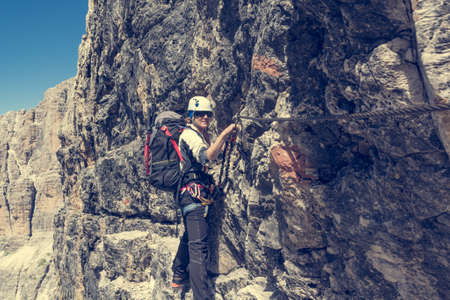Introduction to Topographic Maps
If you love hiking, backpacking, or exploring the American backcountry, mastering topographic maps is a must. Unlike simple road maps or digital GPS screens, topographic (or “topo”) maps give you a detailed picture of the land’s surface—helping you plan routes, spot hazards, and understand what lies ahead on the trail.
What Is a Topographic Map?
A topographic map is a special kind of map that shows both natural and manmade features of the terrain in detail. It uses contour lines to represent elevation changes and symbols to show things like rivers, trails, peaks, and campsites. These maps are trusted by search-and-rescue teams, park rangers, and experienced hikers across the United States for their accuracy and depth of information.
Why Topo Maps Matter for Hikers and Backpackers
In America’s vast wilderness areas—from the Rockies to the Appalachians—cell service can be unreliable or nonexistent. Topographic maps empower you to:
- Navigate off-trail with confidence
- Plan routes that match your skill level by assessing elevation gain and terrain
- Find water sources, campsites, and safe crossings
- Avoid hazards like cliffs or dense forests
Topographic Maps vs Other Navigation Tools
| Navigation Tool | Main Features | Best Use Case |
|---|---|---|
| Topographic Map | Contour lines, symbols for natural/manmade features, elevation data | Backcountry navigation, route planning in wild areas |
| Road Map | Major roads, highways, cities/towns | Driving directions; not suitable for hiking trails or wild terrain |
| GPS Device/App | Real-time location tracking; can overlay topo data; battery dependent | Quick location checks; backup to paper map in remote areas |
| Trail Map/Brochure | Simplified trails, points of interest, sometimes elevation profiles | Short hikes in popular parks; less detail for navigation off-trail |
The Takeaway: Paper Still Matters!
Even in our digital age, having a paper topographic map—and knowing how to read it—is essential when venturing into Americas wild spaces. It’s your reliable backup if technology fails and your guide to understanding the landscape around you.
2. Decoding Contour Lines
Reading contour lines is one of the most important skills for anyone navigating in the American backcountry. These wavy, brown lines on a topographic map tell you everything about the shape and steepness of the land—whether you’re heading up a gentle hillside, down into a rugged canyon, or across a rolling plateau.
What Are Contour Lines?
Contour lines connect points that are at the same elevation above sea level. If you walk along a single contour line in real life, you’d stay at exactly the same height the whole way—even if you twist and turn around hills and valleys.
Key Features of Contour Lines
| Feature | Description | What It Tells You |
|---|---|---|
| Contour Interval | The elevation difference between adjacent contour lines (e.g., 20 feet) | How much you climb or descend between each line |
| Index Contours | Darker or wider lines, usually labeled with an elevation number | Quick reference points for elevation on the map |
| Close Spacing | Lines are packed closely together | The terrain is steep—think cliffs or mountain faces common in areas like Yosemite or the Rockies |
| Wide Spacing | Lines are far apart from each other | The terrain is gentle or flat—like meadows, prairies, or high desert plateaus found in places like Yellowstone or the Southwest |
| Circular Patterns | Contours form closed loops; smaller loops inside larger ones usually mean hills; loops with tick marks (hachures) indicate depressions or craters | Tells you if you’re looking at a peak, hilltop, basin, or crater—a useful clue in volcanic regions like the Pacific Northwest |
Common Landforms on U.S. Topo Maps
| Landform Type | Contour Line Pattern | Where You Might See It in the U.S. |
|---|---|---|
| Ridge/Spur | Contours form elongated ovals pointing away from higher ground; “V” shapes point downhill | Sierra Nevada, Appalachian ridges, Rocky Mountains spurs |
| Valley/Gully/Draw | “V” shapes point uphill toward higher ground; close spacing means steep valley sides | Canyonlands National Park, Grand Canyon side canyons |
| Saddle/Pass | An hourglass shape between two peaks where contours dip lowest | Mountain passes like those along the Pacific Crest Trail |
Quick Tips for U.S. Wilderness Navigation:
- If contour lines cross a stream or river, they form a “V” that points upstream (toward higher elevation).
- Avoid routes where lines bunch tightly together—these spots are often too steep for safe hiking.
- If planning a trip in mountainous regions like Colorado or Alaska, check both the contour interval and overall elevation gain before heading out.
![]()
3. Understanding Map Symbols and Legends
When you’re heading out for a hike or backpacking trip in the U.S., understanding the symbols and legends on a topographic map is just as important as knowing how to read contour lines. Agencies like the United States Geological Survey (USGS) use standard symbols to help hikers recognize key features at a glance. These symbols tell you where trails, water sources, campsites, and even potential hazards are located, making your navigation much more effective.
What Are Map Symbols?
Map symbols are small drawings or icons used to represent real-world features. They keep maps clear and uncluttered while giving you all the information you need. The USGS and other agencies stick to certain standards so that once you know the basics, you can pick up almost any topo map and understand what’s on it.
Common Symbols on USGS Topographic Maps
| Symbol | Feature | Description |
|---|---|---|
| — — — | Trail | Dashed lines in green often mark maintained hiking trails. |
| — — — | Stream or River | Blue lines show flowing water; thickness may indicate size. |
| ■ | Campsite | A small green square may indicate a designated campground. |
| ▓▓▓ | Forest or Woods | Green shading or tree symbols represent forested areas. |
| ——— | Road (Unpaved) | Solid black lines often show roads; dashed for less improved roads. |
| + + + | Boundary Line | Red dashed or dotted lines mark park, forest, or state boundaries. |
| ○ | Pond or Lake | Blue shapes indicate standing bodies of water. |
| ▲ | Peak/Summit | A triangle with elevation marks mountain peaks. |
The Legend: Your Quick Reference Guide
The legend is usually found in one corner of your map. It explains what each symbol means and gives you quick reference for colors, line types, and icons. If you’re using a USGS topo map or one from a popular outdoor brand like National Geographic, check the legend before you set out—especially if you notice any unfamiliar markings.
Pro Tip:
If you’re unsure about a symbol, snap a photo of the legend on your phone before packing your map away. That way, you’ll always have a handy reference even if your map is tucked deep in your backpack!
4. Making Sense of Map Scale
When youre out in the American wilderness, understanding map scale is a game-changer for safe and effective navigation. Map scale tells you how much the real world has been shrunk to fit on your topographic map. This helps you estimate distances, calculate hiking times, and plan your routes with confidence.
What Is Map Scale?
The scale on a topo map shows the ratio between map distance and actual ground distance. Its usually written as a fraction (like 1:24,000) or as a bar scale. For example, a 1:24,000 scale means one inch on the map equals 24,000 inches in real life—that’s about 2,000 feet.
Common Topo Map Scales in the U.S.
| Scale | What It Means | Best Use |
|---|---|---|
| 1:24,000 (7.5-minute) | 1 inch = 2,000 feet | Hiking, backpacking, detailed navigation |
| 1:62,500 (15-minute) | 1 inch = nearly 1 mile | General planning, overview of large areas |
| 1:100,000 | 1 inch = about 1.6 miles | Biking, driving backroads, broad overviews |
How to Use Scale for Planning
Gauging Distance
If your trail looks like its three inches long on a 1:24,000 map:
- Multiply 3 inches by 2,000 feet per inch = 6,000 feet (a little over a mile).
- You can also use the bar scale—just lay your ruler or a piece of string alongside it to measure quickly.
Calculating Hiking Time
A common rule in the U.S. is Naismiths Rule: allow about 30 minutes per mile on flat ground plus extra time for elevation gain. So if your route is two miles long with some hills, plan for at least an hour—more if its rugged terrain.
Planning Safe Routes
- Shorter distances between campsites or water sources help avoid exhaustion.
- Larger scale maps (like 1:24,000) show more detail—use these when navigating tough terrain or finding specific features like creeks or junctions.
- Smaller scale maps are better for seeing the big picture but miss small hazards or side trails.
By mastering map scales and knowing which one fits your adventure, youll travel smarter and safer in Americas wild places!
5. Practical Tips for Wilderness Navigation
Combining Topo Maps, Compass, and GPS
When exploring U.S. backcountry destinations like Yosemite, the Appalachian Trail, or the Rockies, using topographic maps alongside a compass and GPS boosts your navigation confidence and keeps you safe. Here’s how to put your map-reading skills into practice:
Step-by-Step Navigation Process
| Step | What to Do | Pro Tip |
|---|---|---|
| 1. Orient Your Map | Lay your topo map flat and use your compass to align north on the map with true north in the field. | Avoid confusion by always keeping north at the top as you plan your route. |
| 2. Identify Landmarks | Match visible landmarks (peaks, rivers, trails) to symbols and contour features on your map. | If something looks off, double-check both your surroundings and the map scale. |
| 3. Plan Your Route | Choose a route that follows clear terrain features. Use contour lines to judge elevation changes and avoid steep climbs if needed. | On U.S. maps, 40-foot contour intervals are common—watch for tight lines indicating cliffs or ravines! |
| 4. Take Bearings with Compass | Use your compass to take a bearing from your current location to your next landmark on the map. | Add or subtract magnetic declination based on your region (e.g., about 10–15° in many western states). |
| 5. Cross-Check with GPS | If you have a handheld GPS or phone app, confirm your coordinates match where you think you are on the map. | Don’t rely solely on electronics—batteries die! Always carry a paper topo map as backup. |
Navigating Popular U.S. Destinations
- Sierra Nevada: Use topo maps to track high passes and lake basins; watch for snowfields obscuring trails in early summer.
- Grand Canyon: Contour lines help visualize steep drop-offs; always check water sources marked with blue symbols as they may be seasonal.
- PCT or AT Sections: Topo maps show shelters, water sources, and side trails not always marked by signage.
Quick Tips for Staying Oriented
- Check your position at every trail junction or major feature.
- If lost, “triangulate” by taking bearings on two known landmarks to pinpoint your location on the map.
- Crowded national parks may have well-marked trails—but don’t skip navigation basics! Weather can quickly obscure paths and landmarks.
- Practice at home: Study maps of local parks before heading out to bigger wilderness areas.
The more you combine reading topographic maps with hands-on compass work and smart GPS use, the easier it gets to navigate safely in any American wilderness area!


